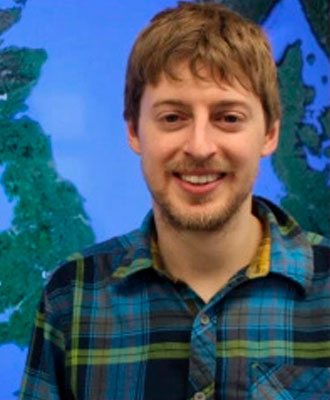To attend, please RSVP to epp@cseg.ca.
Unless we have exceeded the allowable number of people for the auditorium, we will not be replying to your email.
LunchBox Geophysics is free! Simply bring your own lunch (refreshments provided) and enjoy.
Abstract
Significant, poly-phase deformation occurred in adjacent continental domains prior to, simultaneous with, and after the opening of the North Atlantic Ocean. Understanding this deformation is essential for understanding the regional development and the mechanisms driving and controlling rifting and breakup. Here, we primarily use published constraints to construct deformable plate tectonic models for the southern North Atlantic from 200 Ma to present using GPlates. The aim of this work is to test both the capability of the GPlates deformable modelling approach and the published model inputs. Overall, modelled crustal thickness values at 0 Ma produced from the deformable models show general, regional-scale, similarities with values derived from the inversion of gravity data for crustal thickness. However, the deformable models typically underestimate thinning in marginal basins compared to values from gravity inversion, possibly due to 1) thinning occurring earlier than the 200 Ma start time modelled 2) variations in the original crustal thickness or 3) depth-dependent stretching. Results demonstrate that inclusion of micro-continental fragments, and locally defined limits of continental crust, generally produce results more akin to observations. One exception is the Grand Banks where global models produce more realistic deformation, likely due to the inclusion of the exhumed domains continent-ward of the transition zone boundary. Results also indicate that Flemish Cap rotation is required to provide a reasonable fit between North America and Iberia, with the paleo-position of the Flemish Cap likely to be the proto-Orphan basins. Moreover, the East and West Orphan Basins formed separately due to the respective rotations of the Flemish Cap and the Orphan Knoll, which was likely associated with other continental fragments that subsequently contributed to the thicker crust forming the boundary between the East and West Orphan basins. The results also allude towards a link between tectonic and magmatic processes. For example, the inclusion of an Orphan Knoll micro-continental block results in greater extension (higher beta factors) in the northern West Orphan Basin near the termination of the Charlie-Gibbs Fracture Zone, and the site of the Charlie-Gibbs Volcanic Province (CGVP). Thus, we infer that the CGVP was likely influenced by plate tectonic processes through the concentration of strain resulting from interaction in proximity to the transform system. Finally, marginal basins that were considered to be conjugate and thus related, may only appear conjugate through later rotation of micro-continental blocks, and thus their genesis is not directly related.
Biography
Dr. Alexander Peace has a 1st class BSc (Hons) in geology and PhD in structural geology from Durham University, and is currently working as a Postdoctoral Fellow and instructor at Memorial University of Newfoundland. Their research utilises a combined geological-geophysical approach to study the thermal and structural evolution of rift systems and passive margins such as the North Atlantic region, and in particular the West Greenland and Eastern Canadian margins. Specific areas of research interest include: rift-related magmatism and deformation, the role of structural inheritance, microcontinent formation, the drivers and controls on continental breakup and subsequent margin formation.





